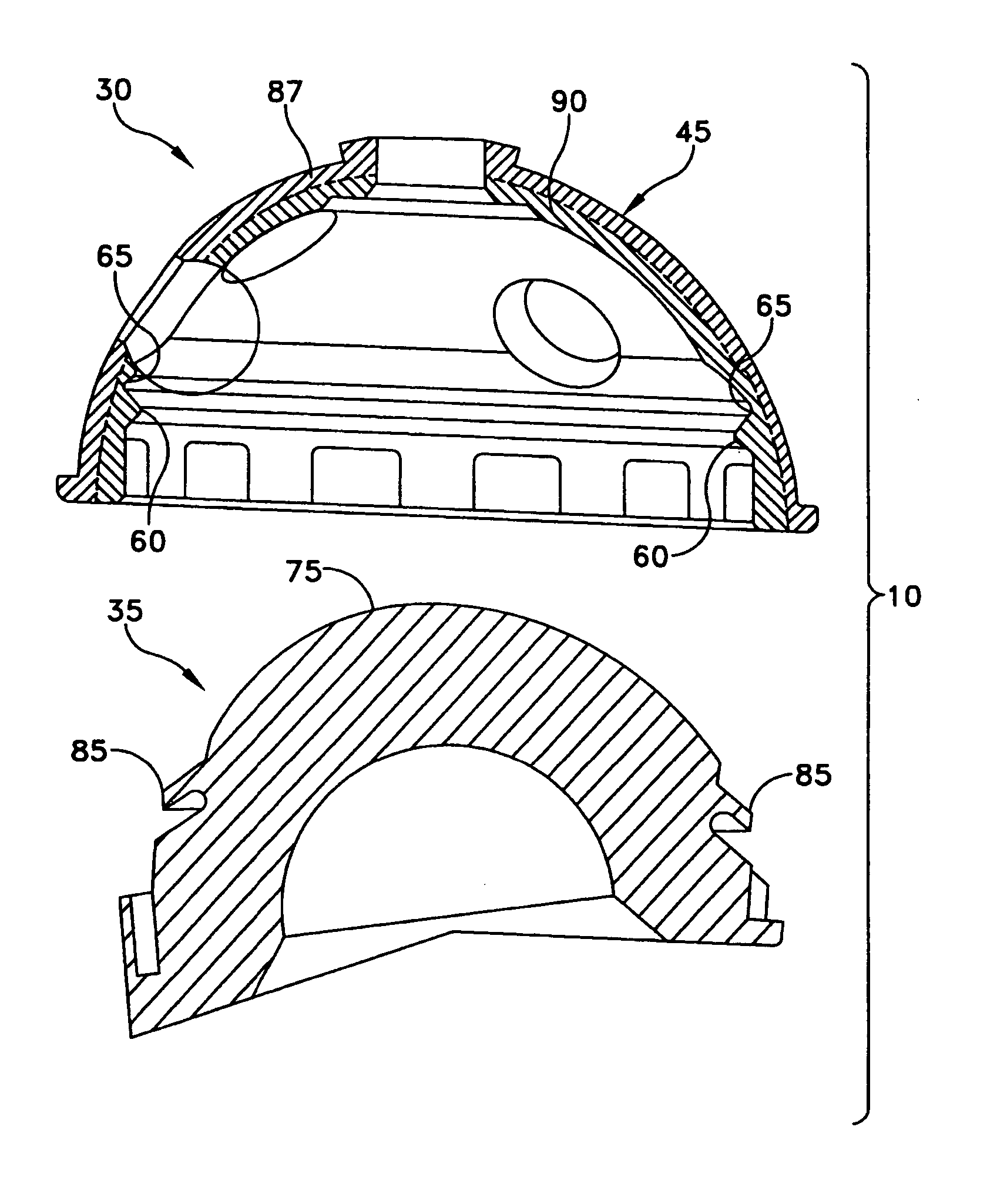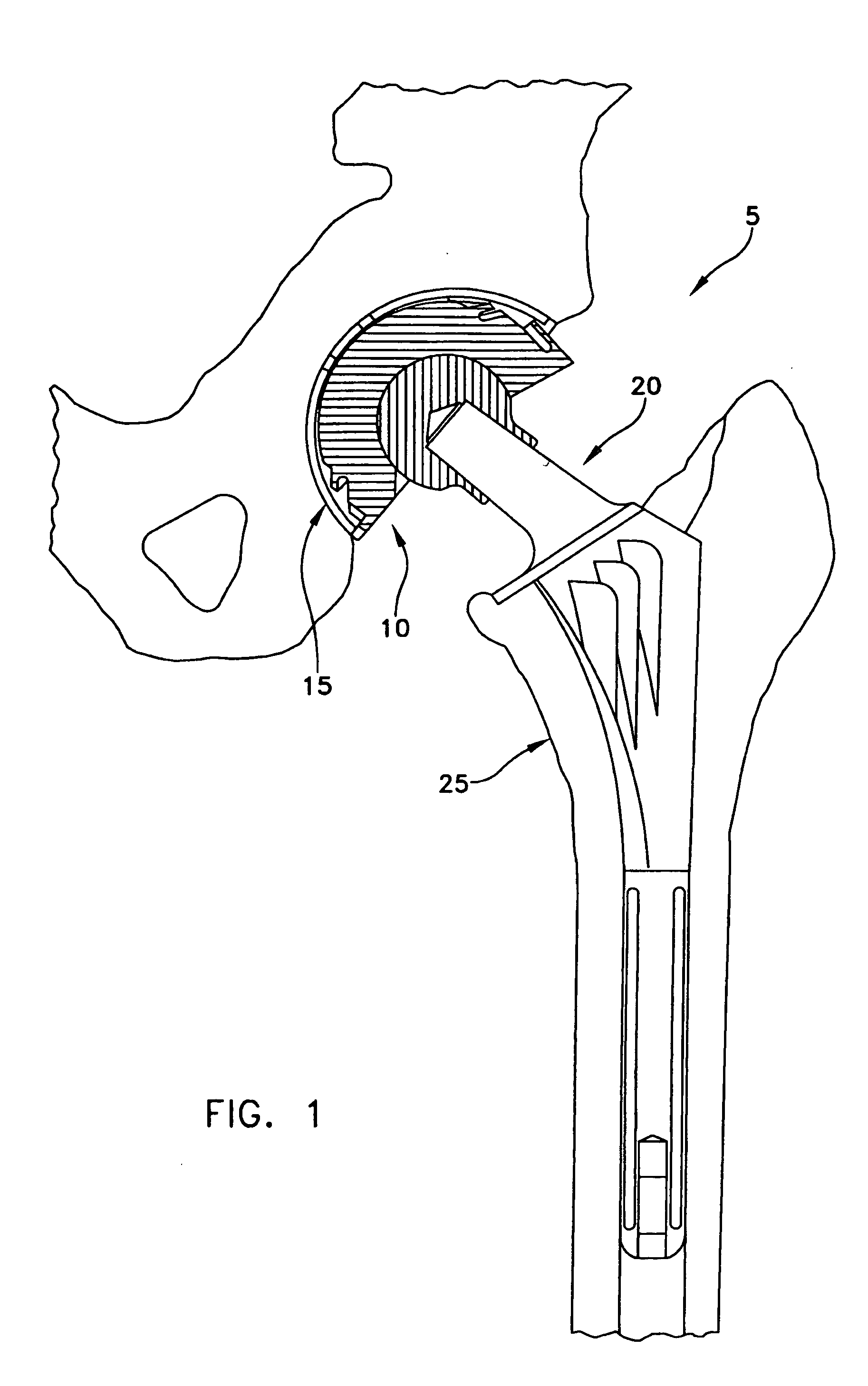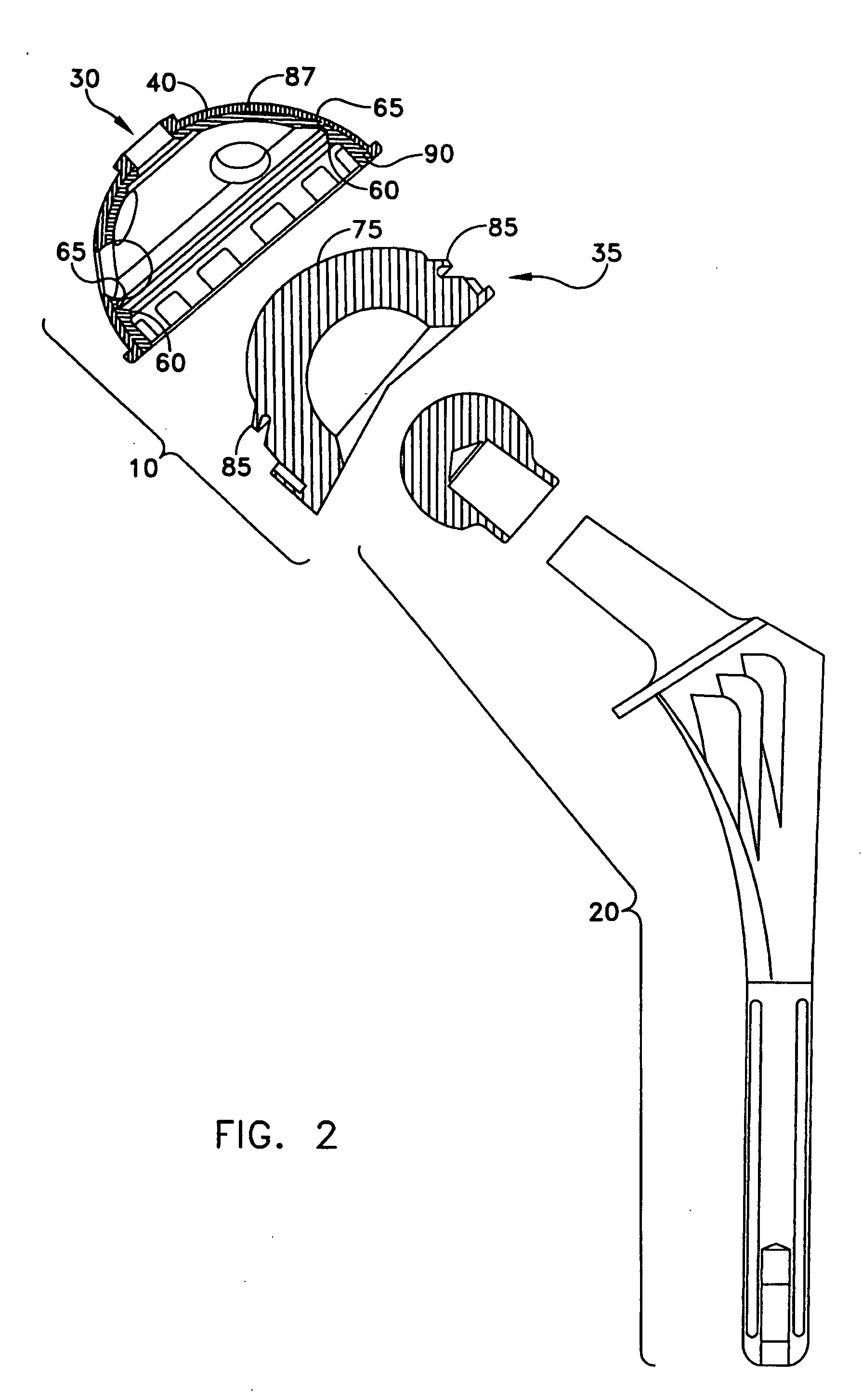Bimetal acetabular component construct for hip joint prosthesis
a technology of acetabular components and hip joints, applied in the field of surgical equipment and procedures, can solve the problems of inability to use, abandonment, and inability to accept teflon “tmj” replacements, and achieve the effects of superior bone ingrowth, superior bone ingrowth, and superior polyethylene-engaging faces
- Summary
- Abstract
- Description
- Claims
- Application Information
AI Technical Summary
Benefits of technology
Problems solved by technology
Method used
Image
Examples
Embodiment Construction
[0031] Looking first at FIG. 1, there is shown a prosthetic total hip joint 5 which generally comprises a prosthetic acetabular component 10 seated in a recess contained in a prepared hip 15, and a prosthetic femoral stem component 20 which is secured to the top end of a resected femur 25.
[0032] Prosthetic acetabular component 10 is shown in greater detail in FIGS. 2 and 3. Prosthetic acetabular component 10 generally comprises a metal base construct 30 and a polyethylene bearing construct 35.
[0033] More particularly, metal seat base construct 30 comprises a metal seat 40 with a rail 60 defining a groove 65 therein.
[0034] Polyethylene liner construct 35 comprises a domed top surface 75 having an annular flange 85. Flange 85 is sized to snap fit in the groove 65 of metal base construct 30, whereby polyethylene bearing construct 35 may be secured to metal base construct 30.
[0035] In use, the socket of the acetabulum of hip 15 is removed, metal base construct 30 is secured to hip 1...
PUM
| Property | Measurement | Unit |
|---|---|---|
| biocompatible | aaaaa | aaaaa |
| hardness | aaaaa | aaaaa |
| strength | aaaaa | aaaaa |
Abstract
Description
Claims
Application Information
 Login to View More
Login to View More - R&D
- Intellectual Property
- Life Sciences
- Materials
- Tech Scout
- Unparalleled Data Quality
- Higher Quality Content
- 60% Fewer Hallucinations
Browse by: Latest US Patents, China's latest patents, Technical Efficacy Thesaurus, Application Domain, Technology Topic, Popular Technical Reports.
© 2025 PatSnap. All rights reserved.Legal|Privacy policy|Modern Slavery Act Transparency Statement|Sitemap|About US| Contact US: help@patsnap.com



